
Did you know that activation of the vagus nerve keeps your immune system in check and releases an assortment of hormones and neurotransmitters such as acetylcholine and oxytocin. This results in reductions in inflammation, reduced allergies, relief from tension headaches, improvements in memory, and feelings of relaxation (Groves & Brown, 2005).
Traditional vagus nerve stimulation (VNS) treatment, also referred to as neuromodulation, involves surgically implanting a bio-electronic device that provides stimulation for the vagus nerve. However, it is also possible to indirectly stimulate your vagus nerve naturally.
The vagus nerve passes through the belly, diaphragm, lungs, throat, inner ear, and facial muscles. Importantly, 80 percent of vagus nerve fibers are afferent or sensory nerves which means that they communicate messages from your body back up to your central nervous system. That means that when you move and breathe into these areas of the body, you can influence the functioning of your vagus nerve.
In this post, I share with you additional yoga, breath, and movement practices that help stimulate and balance the vagus nerve (you can find previously posted practices in my post on natural vagus nerve stimulation and here mind-body therapies for vagus nerve disorders)
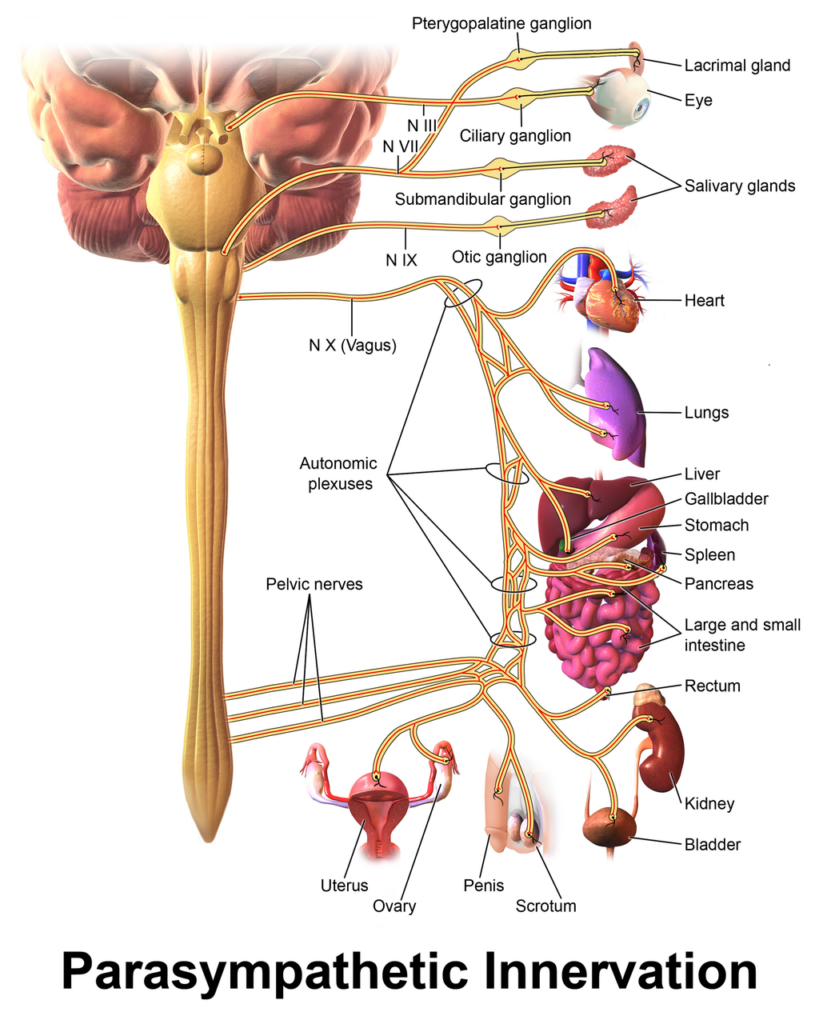
Irregularities in the vagus nerve can cause tremendous distress in physical and emotional health. Physical consequences can include GERD, IBS, nausea or vomiting, fainting, migraines, tinnitus, auto-immune disorders, and seizures. Mental health consequences include fatigue, depression, panic attacks, or a classic alternation between feeling overwhelmed and shut-down.
Stimulating the vagus nerve helps to regulate bothsympathetic hyper-arousal and parasympathetic hypo-arousal. Since all vagus nerve stimulation initiates a relaxation response, it is important to develop tolerance for the parasympathetic state without going into dysfunctional hypo-arousal in which you might feel collapsed or shut-down.
Initially, you might feel sleepy when exploring relaxation. For example, meditation and yoga nidra practices can be deeply relaxing, however some people fall asleep. Ultimately, the goal is to discover a relaxed yet awake state. However, you might experiment with allowing yourself to sleep which could be medicinal for your nervous system. In contrast, if you begin to notice that you feel dizzy or nauseaus when practicing any vagus nerve interventions, then, back off and proceed slowly and gently with just a few minutes a day.

Natural vagus stimulation explores gentle yoga breath and movement interventions that aim to stimulate and balance the vagus nerve. Slowing down the exhalation is considered the most direct way to balance the vagus nerve; especially, when there is an emphasis on fully emptying the lungs through engagement of the diaphragm and abdominal muscles which also provides a gentle massage to the digestive organs. An emphasis on a slow, lengthened exhale stimulates nerve fibers in the lungs to initiate a relaxation response.
Stressful and traumatic situations can cause shallow breathing, holding of the breath, or tightness in the chest. Every inhalation engages the sympathetic nervous system (SNS), and your exhalation stimulates the parasympathetic nervous system (PNS). Slowing down and giving resistance to your exhalation trains your body to use the diaphragm which can help you to feel calmer and more relaxed.
This next breath involves imagining having a straw between your lips. (You can practice this breath with a physical straw as well.) To begin, take a gentle inhalation. Now, purse your lips and exhale very slowly through your imagined straw until your lungs are 80 percent empty. Then, close your mouth and slowly exhale the last 20 percent through your nose as you engage the muscles in your abdomen and diaphragm to expel all of your air. Allow your next inhalation to come naturally, and take 3 regular breaths. If you would like, repeat this exercise 2 or 3 more times. Once you are complete, notice any changes in how you feel mentally, emotionally, and physically.
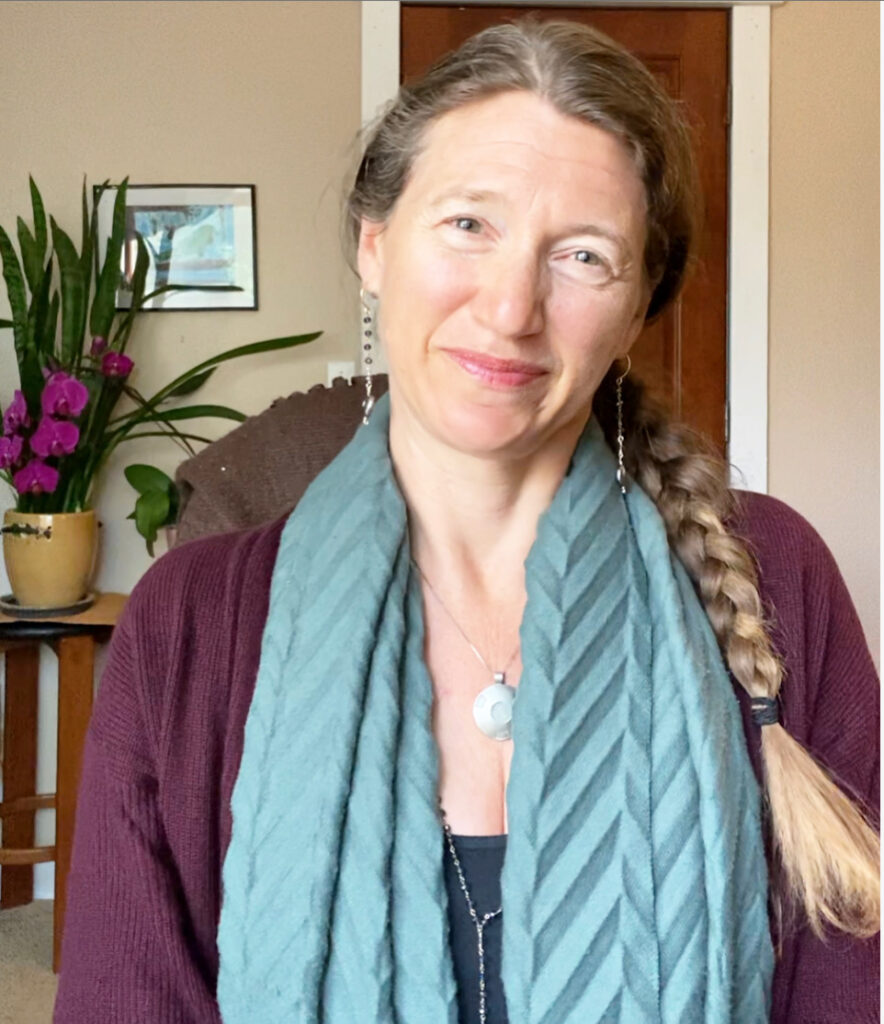
A lovely way to stimulate the vagus nerve is through relaxing the eyes and releasing the muscles in the neck. The eyes are regulated by twelve extraocular muscles that extend down into the subocciptical muscles that surround the upper cervical vertebrae. We can often see in each others eyes whether we feel stressed or relaxed. This is because the extraocular nerve endings have a direct connection to the vagus nerve. (I included a photo above that I took just after completing the next two exercises.)
Eye movements can increase blood flow to the vertebral artery and stimulate the vagus nerve as it passes through the upper neck. Relaxing the muscles in the eyes engages an innate reflex called the oculocardiac reflex (OCR) which initiates a parasympathetic response to slow down the heart rate and lower blood pressure. An individual can faint if this response happens too quickly. However, we can also stimulate the (OCR) with gentle pressure on the eyes which can have a calming effect on the nervous system. You can relax your eyes through the use of an eye pillow placed over your eyes during relaxation or by placing the palms over the eyes and applying very light pressure.
You can also stimulate the vagus nerve through movements of the eyes. For example, oculocardiac convergence has been used to reduce anxiety and panic by repeatedly converging the eyes on a nearby focal point and then shifting to a distant focal point (Bowen, 2008). You can experiment by holding a pencil or small object about 4 to 6 inches in front of your face. Allow your eyes to focus on this object for about 20 to 30 seconds and then shift you focus to look off in the distance for about 20 to 30 seconds. Continue back and forth for about 4 cycles and then softly relax your eyes.

Your vagus nerve passes right behind the sternocleidomastoid muscles (SCM) and in front of the scalenes which tend to be the tightest muscles in the neck. Gentle stretching of the SCM and scalenes in the neck also tends to produce a relaxation response through engagement of the vagus nerve (Rosenberg, 2017).
Explore how it feels to bring your right ear toward your right shoulder without turning your head. Then, bring your eyes toward the right. Take 4 or 5 breaths into the left side of your neck and then bring your head back to center as your eyes come forward again. Repeat this on the left side and notice how you feel. You can also explore how it feels to bring your right ear to the right shoulder as you send your eyes and gaze to the left. Once again hold this shape for about 4 or 5 breaths and then switch sides.
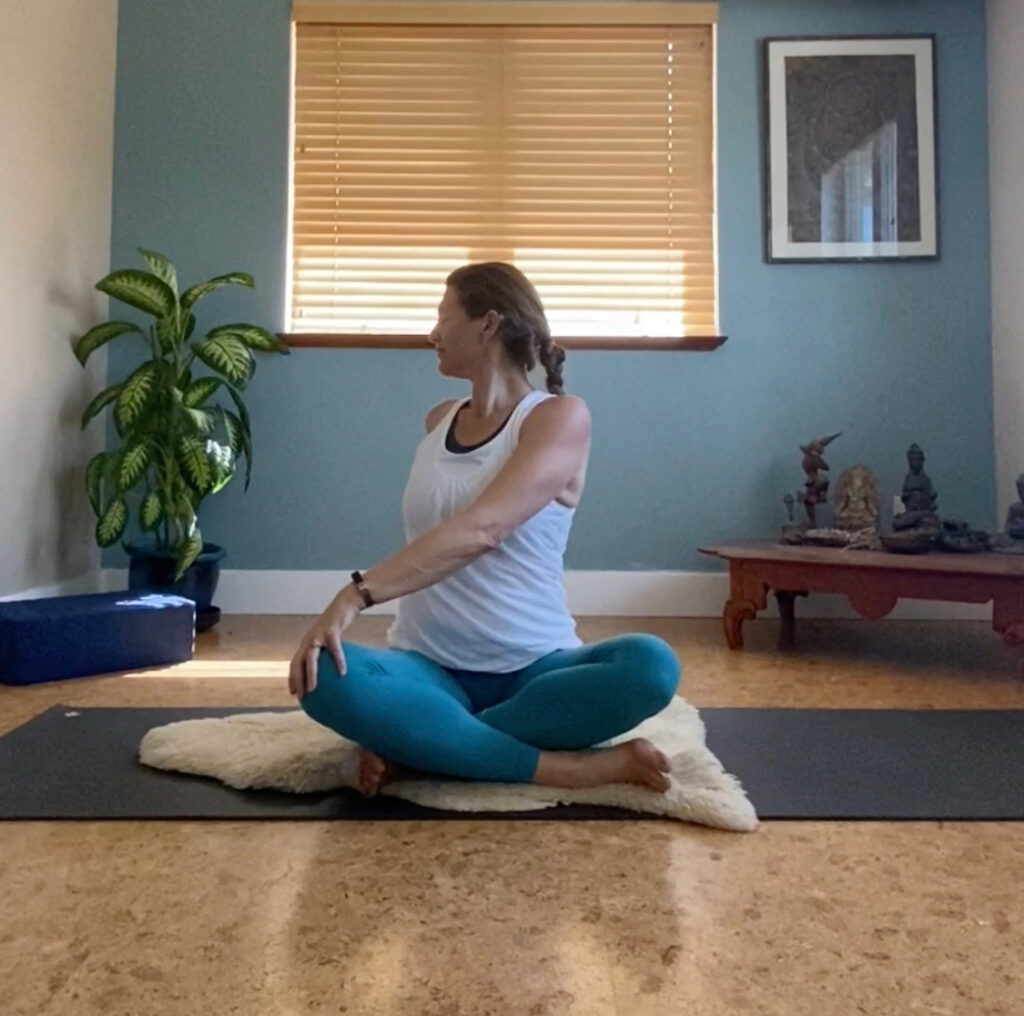
Simple seated yoga stretches can help to balance the vagus nerve as you move the spine, belly, chest, and throat. This next practice can be done on the floor or seated toward the front of a chair.
If you would like, come into a twist by placing your left hand on the outside of your right leg while placing your right hand behind you or in the center of your chair. On an inhalation lengthen your spine, and on your exhalation, deepen the twist of your spine toward the right. You can also bring your chin to the right and gaze over your shoulder. Take several breaths here to massage your digestive organs and then return to center. When you are ready, switch sides and repeat to the left. Once you are complete, return to center and notice how you feel mentally, physically, emotionally.
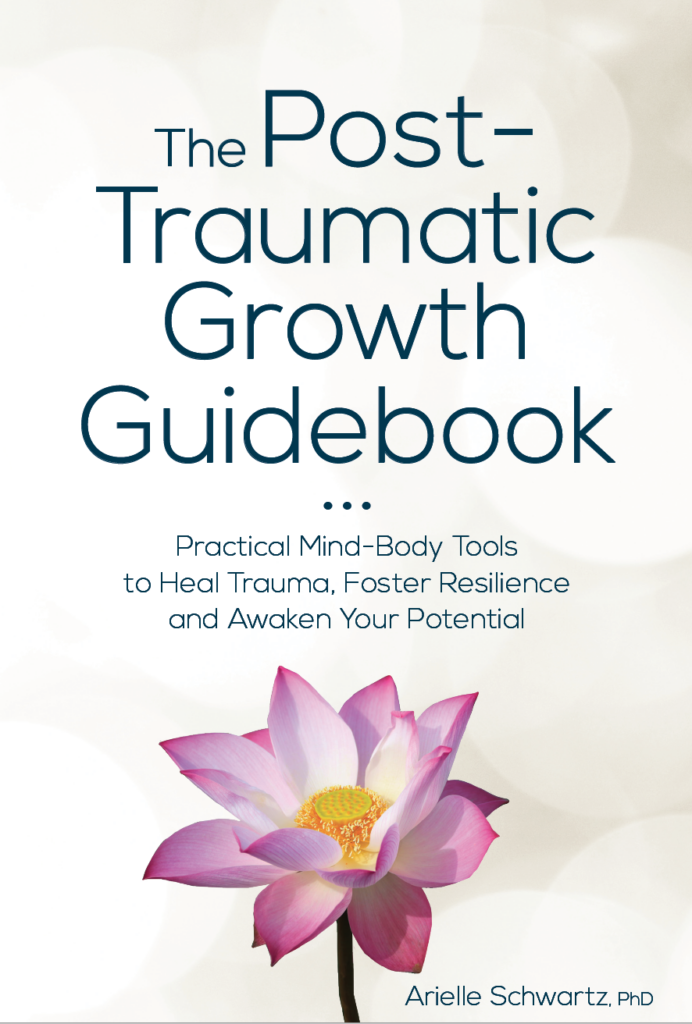
You might also like The Post Traumatic Growth Guidebook. Within this book, you will find an invitation to see yourself as the hero or heroine of your own life journey. A hero’s journey involves walking into the darkness on a quest for wholeness. This interactive format calls for journaling and self-reflection, with practices that guide you beyond the pain of your past and help you discover a sense of meaning and purpose in your life. Successful navigation of a hero’s journey provides opportunities to discover that you are more powerful than you had previously realized. Click here to order the book on Amazon.

And, in The Complex PTSD Workbook, you’ll learn all about Complex PTSD Recovery and gain valuable insight into the types of symptoms associated with unresolved childhood trauma, while applying a strength-based perspective to integrate positive beliefs and behaviors. Click here to order.
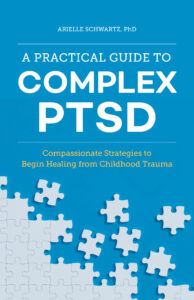
A Practical Guide to Complex PTSD: Compassionate Strategies for Childhood Trauma, which is meant to provide compassionate support for the process of healing from childhood trauma. You can think of it as a lantern that will illuminate the dark spaces and provide a sense of hope in moments of despair. The practical strategies you will learn in this book are taken from the most effective therapeutic interventions for trauma recovery. You will learn the skills to improve your physical and mental health by attending to the painful wounds from your past without feeling flooded with overwhelming emotion. My wish is to help you discover a new sense of freedom. The traumatic events of your past no longer need to interfere with your ability to live a meaningful and satisfying life. Click here to Order on Amazon.
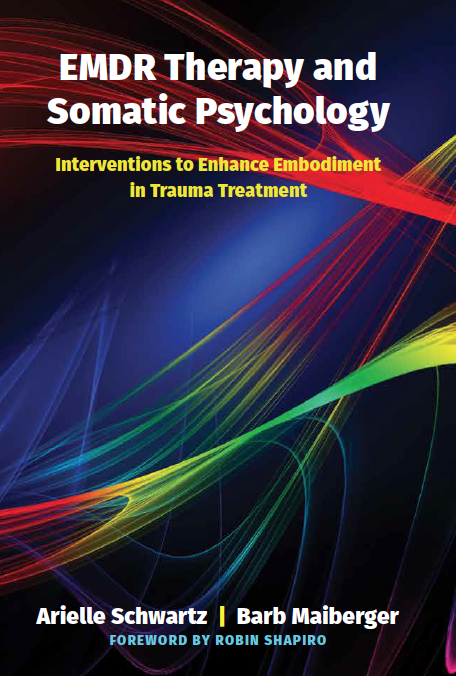
For therapists, The EMDR Therapy and Somatic Psychology book, teaches you how to integrate two of the best known trauma recovery modalities into your practice. Click to order it here and increase your toolbox for healing using this integrative and effective approach to healing.

Dr. Arielle Schwartz is a licensed clinical psychologist, wife, and mother in Boulder, CO. She offers trainings for therapists, maintains a private practice, and has passions for the outdoors, yoga, and writing. She is the developer of Resilience-Informed Therapy which applies research on trauma recovery to form a strength-based, trauma treatment model that includes Eye Movement Desensitization and Reprocessing (EMDR), somatic (body-centered) psychology and time-tested relational psychotherapy. Like Dr. Arielle Schwartz on Facebook,follow her on Linkedin and sign up for email updates to stay up to date with all her posts

Arielle Schwartz, PhD, is a psychologist, internationally sought-out teacher, yoga instructor, and leading voice in the healing of PTSD and complex trauma. She is the author of five books, including The Complex PTSD Workbook, EMDR Therapy and Somatic Psychology, and The Post Traumatic Growth Guidebook.
Dr. Schwartz is an accomplished teacher who guides therapists in the application of EMDR, somatic psychology, parts work therapy, and mindfulness-based interventions for the treatment of trauma and complex PTSD. She guides you through a personal journey of healing in her Sounds True audio program, Trauma Recovery.
She has a depth of understanding, passion, kindness, compassion, joy, and a succinct way of speaking about very complex topics. She is the founder of the Center for Resilience Informed Therapy in Boulder, Colorado where she maintains a private practice providing psychotherapy, supervision, and consultation. Dr. Schwartz believes that that the journey of trauma recovery is an awakening of the spiritual heart.